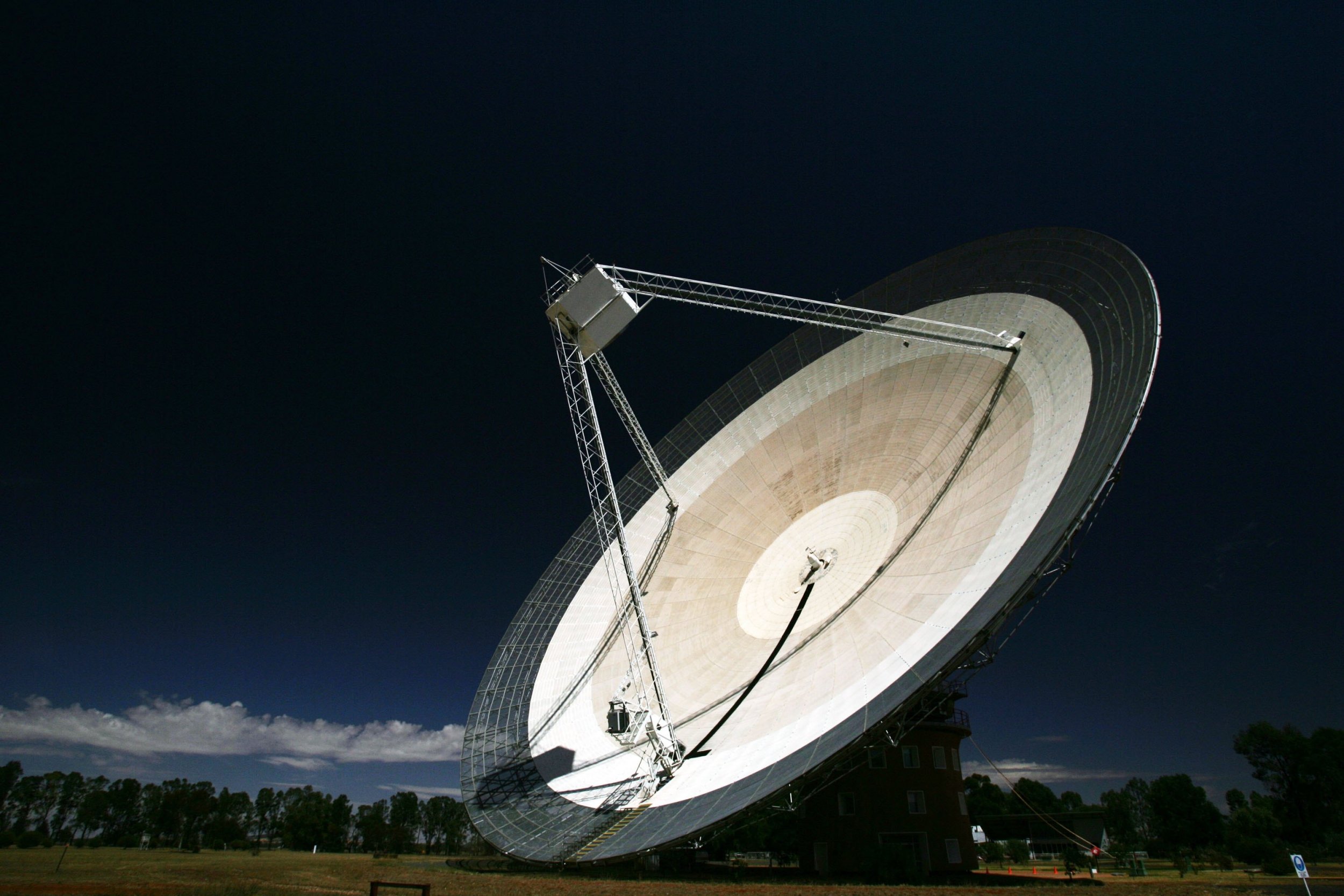
A new mystery signal from deep space has been detected, leaving scientists baffled as to where it came from and what caused it.
The signal, known as a fast radio burst (FRB), was detected in 2015 by scientists using the Parkes radio telescope in Australia. It adds to the two dozen other FRBs previously recorded. But this one, known as FRB 150215, is even stranger than those that came before it.
FRBs are radio signals that last just a few milliseconds. They appear to be coming from deep space, but because of their extremely short duration—and because scientists normally only notice them in data after the event has taken place—their origin remains a mystery.
The first FRB was detected in 2001. Since then, at least 20 other bursts have been recorded. One of these, FRB 121102, was found to repeat, with 16 bursts coming from the same direction in space. This allowed scientists to hone in on their location, finding that they were emanating from an unassuming small galaxy over three billion light-years away.
But this still did not help scientists pinpoint their source—no known nearby object could have been producing the FRBs.
Scientists have several theories about the source of FRBs. One is that they are caused by a cataclysmic event, such as a neutron star collapsing into a black hole or supernova. Another potential source is a young, highly magnetised neutron star. Neither, however, fully explains the FRBs recorded because a one-off high energy event like a collapsing star would not be able to produce repeating bursts.
Now, researchers led by Emily Petroff from the Netherlands Institute for Radio Astronomy, have announced the discovery of another, even stranger FRB. Their study appears on Cornell University's online server where scientists can share their research before it is formally published. In it, the team describe FRB 150215, which they were able to catch in real time, meaning immediate follow-up observations could be made to try and catch the source in action.
We found this FRB in real-time (*right when it happened*) at Parkes on 15 February, 2015. It looks like this (super zoomed in): pic.twitter.com/6IEBmxnvQ7
— Dr. Emily Petroff (@ebpetroff) May 9, 2017
This burst is unusual because scientists should not have been able to detect it at all. The Milky Way's magnetic field, which the burst travelled through on its way to Earth, should have changed the way the FRB travelled. But this did not happen.
In an interview with Gizmodo, Petroff explained: "It probably traveled through some kind of hole in the Milky Way that makes it easy to find compared to normal searches in the galaxy."
After the FRB was detected, the team carried out extensive follow-up observations in the hope of spotting the event that caused it. The array of telescopes used effectively means the team were covering as many cosmic bases as they could—different observations would pick up different potential sources.
"We spent a lot of time with a lot of telescopes to find anything associated with it," Petroff said. "We got new wavelength windows we've never gotten before. We looked for high-energy gamma rays and neutrinos...we ruled out some source classes but no detection is a little unhelpful. We're still trying to figure out where this one came from."
If you zoom out, it looks like a bright spike in the data: pic.twitter.com/K9rlBNxWqW
— Dr. Emily Petroff (@ebpetroff) May 9, 2017
Commenting on the study, Shami Chatterjee, from the Cornell Center for Astrophysics and Planetary Science, told the website: "I have to say this is a fantastic paper but it is a bummer of a paper. They threw every resource that we have at this FRB...and they see nothing. It is incredibly important in the sense that even with relatively prompt follow-up there isn't an afterglow or counterpart that is obvious."
Responding to questions about the source potentially being an advanced alien civilisation, Petroff said: "Just to be clear, we don't know what is causing the fast radio bursts we see, but we don't think it's anything to do with aliens!"
Uncommon Knowledge
Newsweek is committed to challenging conventional wisdom and finding connections in the search for common ground.
Newsweek is committed to challenging conventional wisdom and finding connections in the search for common ground.
About the writer
Hannah Osborne is Nesweek's Science Editor, based in London, UK. Hannah joined Newsweek in 2017 from IBTimes UK. She is ... Read more
To read how Newsweek uses AI as a newsroom tool, Click here.








